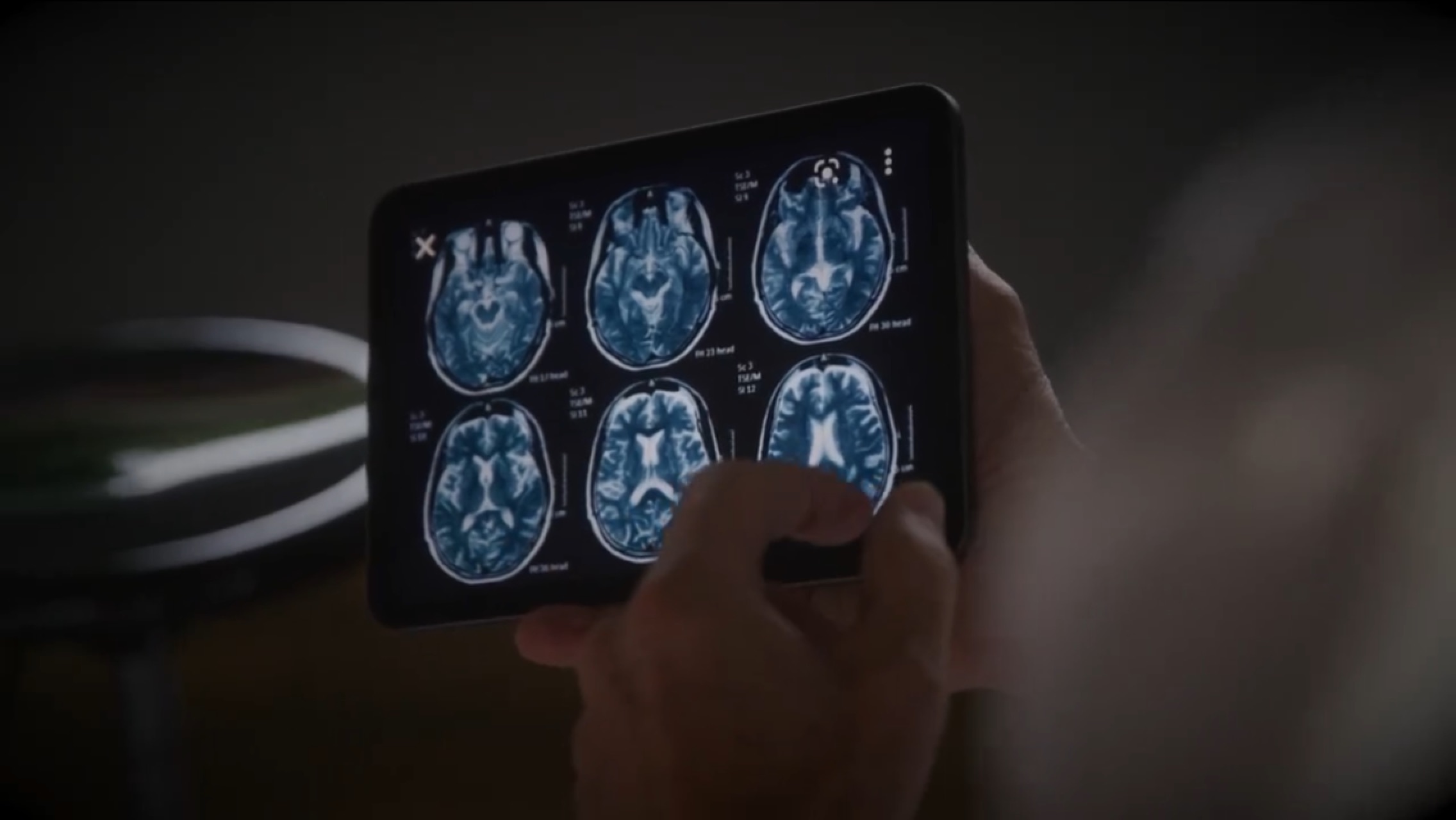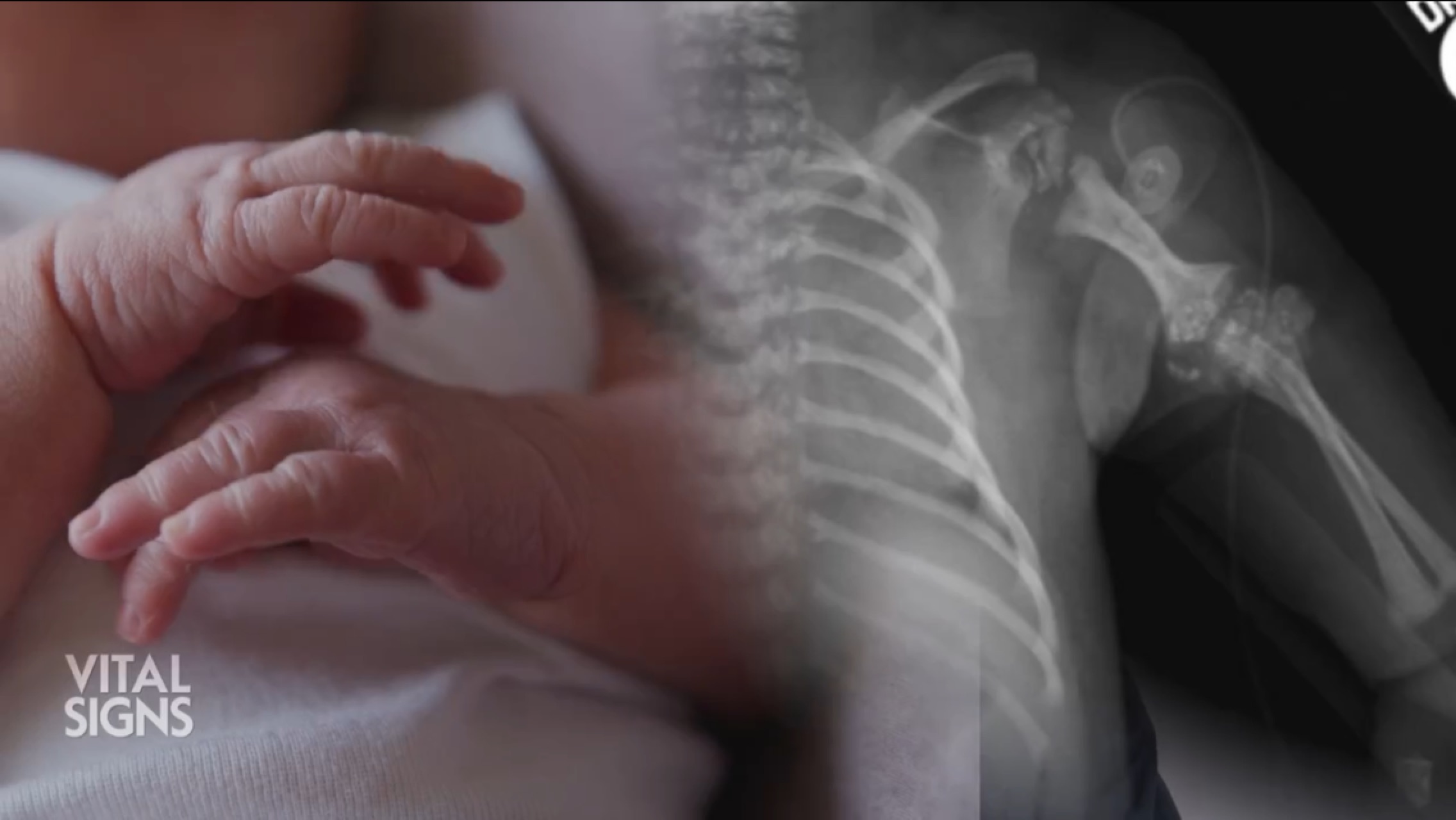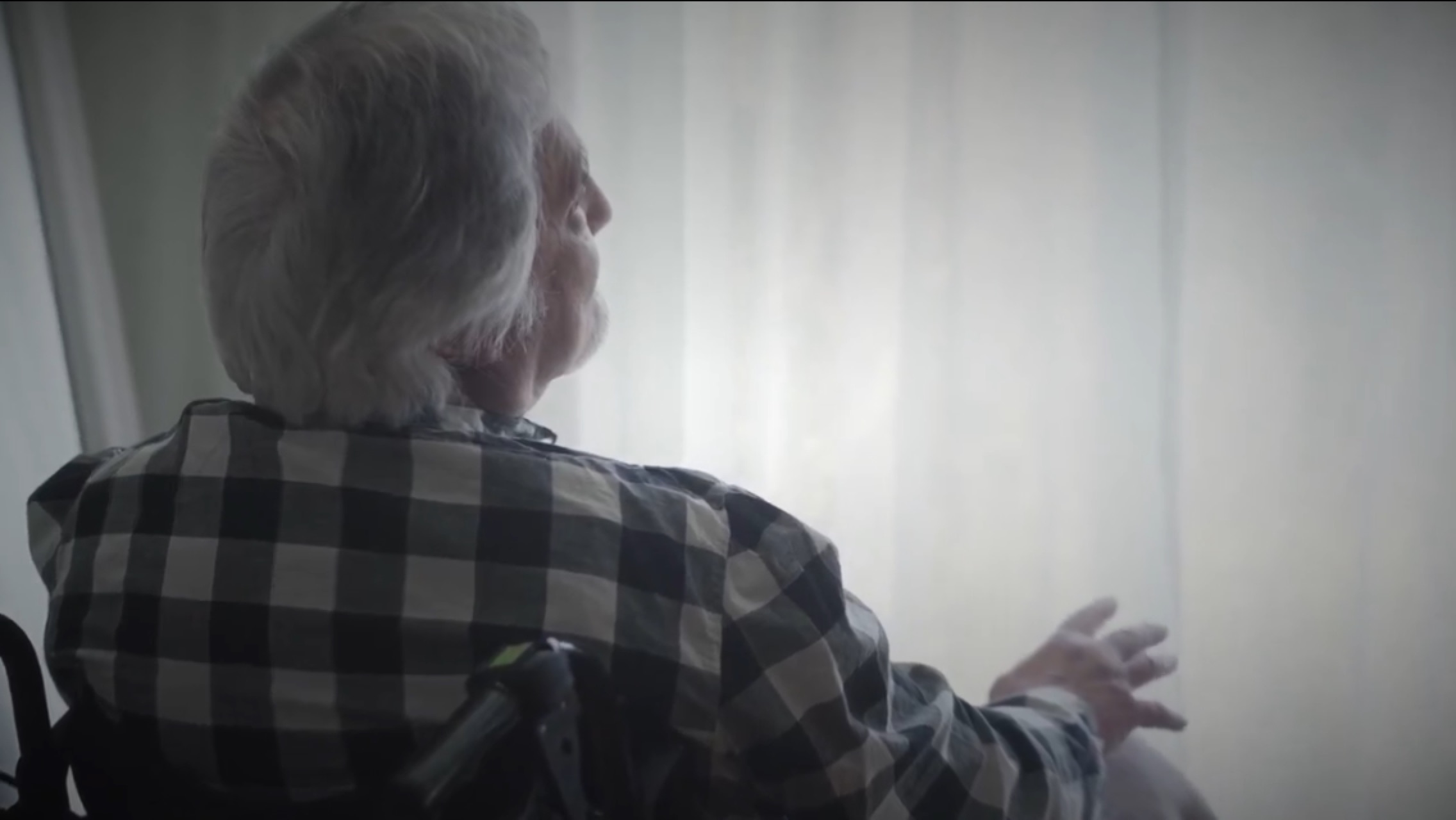Is There a Cure? New Medical Discovery Provides Hope for Alzheimer’s and Rare Childhood Disease
Commentary Health can easily be taken for granted. On the other hand, when our health deteriorates, many think there’s nothing that can be done, particularly for serious conditions like Alzheimer’s. However, due to an exciting new medical discovery, that may be changing. Footage from “Alzheimer’s: Key to Cure.” (EpochTV) In a recent episode of “Vital Signs” on EpochTV, host Brendon Fallon examines two diseases that have been considered incurable. The diseases take place at both ends of the life spectrum. The first is Alzheimer’s disease, which affects one in nine Americans over the age of 65 and is the most common cause of dementia. The other is rhizomelic chondrodysplasia punctata (RCDP), which is found in children and only occurs once in every 100,000 live births. According to the episode, RCDP is about as rare as Alzheimer’s is common. Medical science offers few solutions for either disease. But thanks to research led by Dr. Dayan Goodenowe, a new therapy offers more than just treating symptoms but rather displays its power to restore health. Brendon Fallon interviews neuroscientist Dr. Goodenowe, and Dr. Sheldon Jordan, a veteran neurologist. Together, these doctors have researched and developed a new treatment that has been producing profound results for both patients with Alzheimer’s and children diagnosed with RCDP. The rare children’s disease disrupts how various parts of the body develop, causing shortening of the upper arms and thigh bones. This leads to deformed joints, stiffness, and pain. The condition also causes intellectual disabilities, as well as heart and breathing problems. Generally, when a child receives an RCDP diagnosis, the outlook is not good. Footage from “Alzheimer’s: Key to Cure.” (EpochTV) The EpochTV episode features two families whose children suffer from RCDP. Six-year-old Thatcher’s parents say that he is less functional now than when he was six months old. Most children do not survive long with RCDP, and those who do live into their teen years experience a consistent decline in quality of life. According to the film, the cause of this disease may also provide the key to treating it. Dr. Goodenowe says the root cause of RCDP has to do with a genetic vitamin deficiency. He compares it to Scurvy, a disease that inflicted sailors who did not get enough fruits and vegetables, causing a lack of vitamin C. Without replenishing that nutrient, these sailors would die. The same is true for those with RCDP. Only the deficiency is in an essential brain nutrient called “plasmalogen.” According to the film, patients with RCDP cannot produce plasmalogen on their own. This nutritional deficiency affects the lungs, heart, and brain. This is why most children with RCDP die of either pulmonary or heart failure. Plasmalogen deficiency also affects the brain, which is where the connection to Alzheimer’s comes in. The brain needs certain biochemicals to be able to build itself. Dr. Goodenowe says that the development of the brain is a matter of getting the anatomy right and everything to work together at the right time. He says that when the brain does not have one of the essential chemicals it needs to function, in this case, plasmalogen, a person’s health declines. Plasmalogens are part of a crucial cell structure called the myelin sheath. Myelin insulates our nerves, allowing them to conduct an impulse, much like the plastic around electrical wires. However, nerves don’t start with this insulation. Dr. Goodenowe explains that when we are born, our nerves are like copper wires lying on the ground, with no insulation. If you put electricity on these wires, it will skip all over. Shortly before birth and beyond, the body begins insulating nerves with a thick coating. The thicker the coating, the stronger and faster the electrical signal can travel. According to Dr. Goodenowe, the greatest concern with RCDP is reduced myelination. Research also suggests that impaired myelination goes hand in hand with Alzheimer’s. Dr. Goodenowe explains why this may be the case, coming back to the essential vitamin, plasmalogen. Those with Alzheimer’s have lower levels of a certain molecule than those with normal cognitive function. Dr. Goodenowe identified that molecule as plasmalogen. Replenishing plasmalogens have shown remarkable results for those suffering from the deficiency. Footage from “Alzheimer’s: Key to Cure.” (EpochTV) Thatcher’s mother tells how her son was showing decreased heart function, which is very common in children with RCDP. After receiving plasmalogen therapy, Thatcher’s tests showed different results. “The cardiologist came in and said ‘I’ve never seen this before. I don’t have a medical explanation for you, but Thatcher’s heart is now functioning at a normal level.’” Thatcher’s mother said she got chills at the news. “It was so overwhelming because Dr. Goodwin said that that would happen.” The EpochTV episode also shows how children with RCDP who undergo plasmalogen the

Commentary
Health can easily be taken for granted. On the other hand, when our health deteriorates, many think there’s nothing that can be done, particularly for serious conditions like Alzheimer’s. However, due to an exciting new medical discovery, that may be changing.
 Footage from “Alzheimer’s: Key to Cure.” (EpochTV)
Footage from “Alzheimer’s: Key to Cure.” (EpochTV)
In a recent episode of “Vital Signs” on EpochTV, host Brendon Fallon examines two diseases that have been considered incurable. The diseases take place at both ends of the life spectrum. The first is Alzheimer’s disease, which affects one in nine Americans over the age of 65 and is the most common cause of dementia. The other is rhizomelic chondrodysplasia punctata (RCDP), which is found in children and only occurs once in every 100,000 live births.
According to the episode, RCDP is about as rare as Alzheimer’s is common. Medical science offers few solutions for either disease. But thanks to research led by Dr. Dayan Goodenowe, a new therapy offers more than just treating symptoms but rather displays its power to restore health.
Brendon Fallon interviews neuroscientist Dr. Goodenowe, and Dr. Sheldon Jordan, a veteran neurologist. Together, these doctors have researched and developed a new treatment that has been producing profound results for both patients with Alzheimer’s and children diagnosed with RCDP. The rare children’s disease disrupts how various parts of the body develop, causing shortening of the upper arms and thigh bones. This leads to deformed joints, stiffness, and pain. The condition also causes intellectual disabilities, as well as heart and breathing problems. Generally, when a child receives an RCDP diagnosis, the outlook is not good.
 Footage from “Alzheimer’s: Key to Cure.” (EpochTV)
Footage from “Alzheimer’s: Key to Cure.” (EpochTV)
The EpochTV episode features two families whose children suffer from RCDP. Six-year-old Thatcher’s parents say that he is less functional now than when he was six months old. Most children do not survive long with RCDP, and those who do live into their teen years experience a consistent decline in quality of life. According to the film, the cause of this disease may also provide the key to treating it.
Dr. Goodenowe says the root cause of RCDP has to do with a genetic vitamin deficiency. He compares it to Scurvy, a disease that inflicted sailors who did not get enough fruits and vegetables, causing a lack of vitamin C. Without replenishing that nutrient, these sailors would die. The same is true for those with RCDP. Only the deficiency is in an essential brain nutrient called “plasmalogen.” According to the film, patients with RCDP cannot produce plasmalogen on their own. This nutritional deficiency affects the lungs, heart, and brain. This is why most children with RCDP die of either pulmonary or heart failure. Plasmalogen deficiency also affects the brain, which is where the connection to Alzheimer’s comes in.
The brain needs certain biochemicals to be able to build itself. Dr. Goodenowe says that the development of the brain is a matter of getting the anatomy right and everything to work together at the right time. He says that when the brain does not have one of the essential chemicals it needs to function, in this case, plasmalogen, a person’s health declines.
Plasmalogens are part of a crucial cell structure called the myelin sheath. Myelin insulates our nerves, allowing them to conduct an impulse, much like the plastic around electrical wires. However, nerves don’t start with this insulation. Dr. Goodenowe explains that when we are born, our nerves are like copper wires lying on the ground, with no insulation. If you put electricity on these wires, it will skip all over. Shortly before birth and beyond, the body begins insulating nerves with a thick coating. The thicker the coating, the stronger and faster the electrical signal can travel. According to Dr. Goodenowe, the greatest concern with RCDP is reduced myelination.
Research also suggests that impaired myelination goes hand in hand with Alzheimer’s. Dr. Goodenowe explains why this may be the case, coming back to the essential vitamin, plasmalogen. Those with Alzheimer’s have lower levels of a certain molecule than those with normal cognitive function. Dr. Goodenowe identified that molecule as plasmalogen. Replenishing plasmalogens have shown remarkable results for those suffering from the deficiency.
 Footage from “Alzheimer’s: Key to Cure.” (EpochTV)
Footage from “Alzheimer’s: Key to Cure.” (EpochTV)
Thatcher’s mother tells how her son was showing decreased heart function, which is very common in children with RCDP. After receiving plasmalogen therapy, Thatcher’s tests showed different results. “The cardiologist came in and said ‘I’ve never seen this before. I don’t have a medical explanation for you, but Thatcher’s heart is now functioning at a normal level.’” Thatcher’s mother said she got chills at the news. “It was so overwhelming because Dr. Goodwin said that that would happen.”
The EpochTV episode also shows how children with RCDP who undergo plasmalogen therapy show significant improvement in heart function, coordination, and mobility. They also increase in cognitive awareness and their ability to interact and communicate with others.
Dr. Goodenowe says the difficulty is not in replenishing plasmalogen deficiency, but rather in recovering from severe and prolonged deficiency. However, now that the patients are seeing improvement, he says they can determine what other needs must be met and build on that success. “It’s actually not complicated,” says Dr. Goodenowe. “We have complicated medicine, complicated human health, to the point that it’s not understandable. Nobody believes anything can be fixed anymore. We don’t cure diseases, we treat symptoms of the disease.”
Because of this, he believes that people don’t think it’s possible to heal and recover from certain diseases. However, according to Dr. Goodenowe, the human body is designed to work. If we give it what it needs, we can live and function properly for many years.
There are currently hundreds of doctors alongside Dr. Goodenowe that are treating Alzheimer’s patients with plasmalogens. In addition, a treatment trial for children with autism will soon begin. Because Alzheimer’s is as common as RCDP is rare, there is a broad enough market for plasmalogen production to make therapy financially viable for children like Thatcher. Please share this video to spread this exciting development that offers hope to those who did not have it before.












